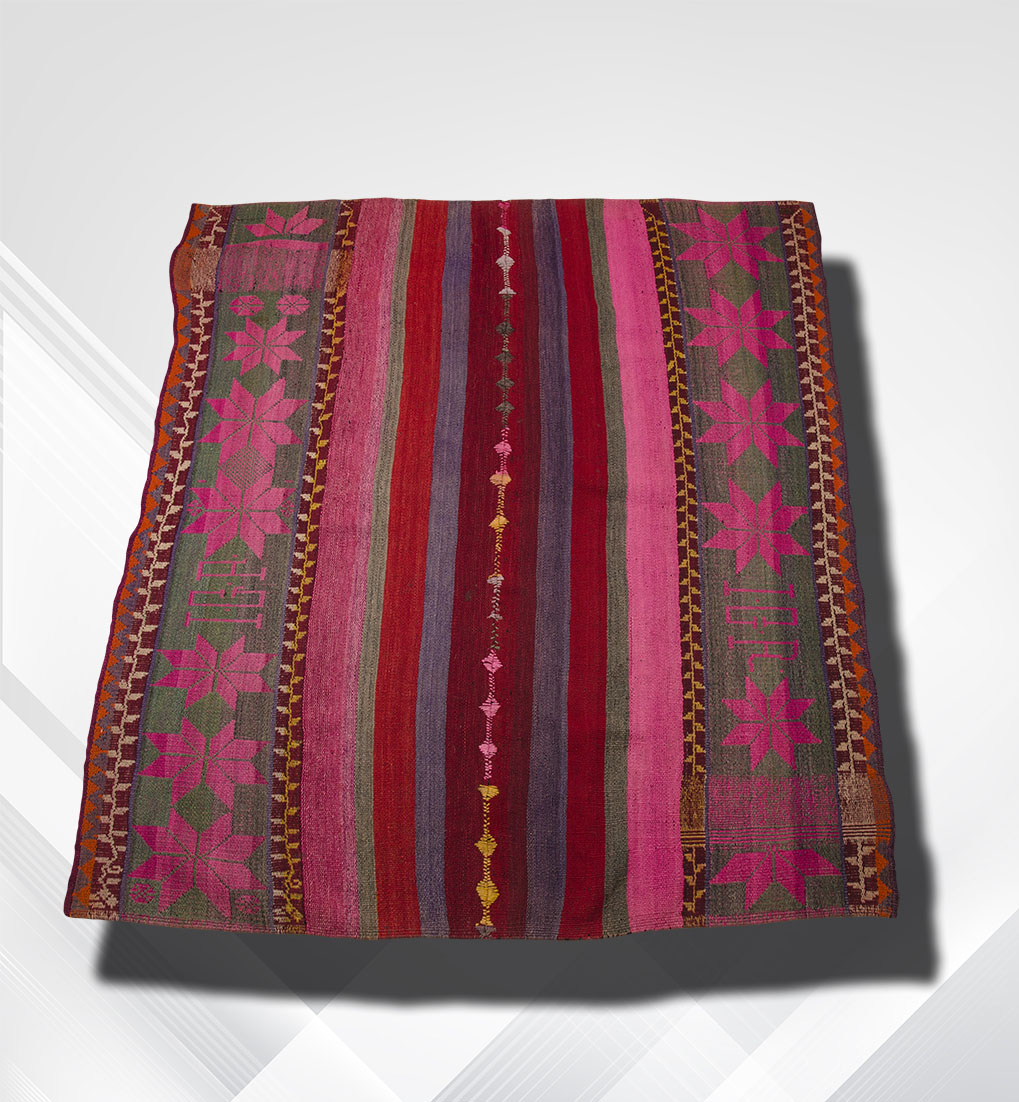BACK TO TOP
TEXTILES
A RUG WITH ART
K'ama. Potosi, Bolivia. Second half of the 20th century.
Piece woven on a stake loom, at the warp side with a four-edge technique, with sheep's wool spun manually with a spindle and dyed with natural dyes, highlighting among them the cochineal grain with which various colors were obtained: red, pink, lilac and violet by varying the mordants used during the dye bath. The floral design of its ornamentation, as well as the sprigs of leaves on the streets that flank it, locate its origin in the south of Potosí, near the border area with the Argentine province of Jujuy, as well as it can also be asserted that it was woven upon request, taking into account the initials forming a monogram that interrupts the sequence of flowers on both cloths, which, presented in a mirror, have been joined by ornamental stitching. Measures. Length: 165cm. Width: 150cm.
The compact weave of the well-twisted wool and the almost four kilograms of weight of this k'ama, a term that the Quechuas used to call these blankets or puyos for shelter, leaves open the question of its function, since it may have been conceived as a rug. as a living room in a stately home, or as a bed blanket for a Colla family. This use, in the case of lighter garments that are also used indistinctly as a poncho during the day or a blanket at night, leads to the latter being called Poncho K'ama or Poncho Camero (1), a more frequent version of these tissues. Here in a beautiful and solid copy.
Notes:
1. Kathy Barth, Teresa Oroza: Traveling through Bolivia through the wonders of weaving. Ed. Jackson International, 2001, p. 92.
Are you interested in selling some works?
Send us an email briefly indicating
which works you intend to put on sale, and we will respond. click here
Subscribe to our newsletter to be updated.
Check our Newsletters